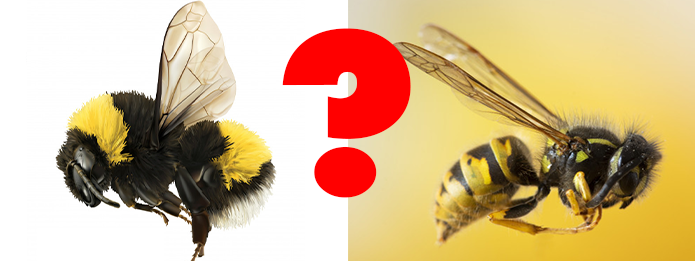The Difference Between Bumblebees and Honey Bees

Whether you are intrigued by insects or strive to keep your distance from them, bees are one type of critter that should not be overlooked. Bees are surprisingly diverse and incredibly important to most ecosystems. While many people may apply the names “bumblebee” and “honey bee” to any flying, fuzzy insect they see, these two categories are actually quite distinct. In fact, there are hundreds of species within the former group and another handful in the latter. Consider several interesting bits of information that may help you better appreciate the bees in the Kitchener area, as well as safely address a possible infestation at your home.
Habitat
Bumblebees and honey bees generally live in distinct locations. Bumblebees prefer to live underground in burrows they dig for themselves. Honey bees, on the other hand, usually create hives in trees and other above-ground sites. Both of these groups use the pollen they find within flowers as a food source and make honey in their nests and hives. Bumblebees, however, make very little of this sweet substance in comparison to honey bees.
Social Behaviour
Both types of bees are social to some degree, though honey bees are more group-oriented than bumblebees. Honey bees often have thousands of neighbours in their hives, while a bumblebee may share its nest with only hundreds of other critters. On top of that, honey bees have developed a language of sorts that uses body movements, or “dances,” to tell others where to find pollen.
Another similarity between these two categories of insects is that they break down their communities into three distinct groups: queens, drones and workers. While the queens of both types of bees can live through the winter, honey bee queens live much longer.
Appearance
If you cannot tell whether a certain insect is a bumblebee or a honey bee based on where it lives or how it behaves, you may be able to do so by examining its appearance. Bumblebees generally have thick bodies, dark wings and a lot of hair. Honey bees, on the other hand, are usually thinner, less hairy and have four total wings, with the front set being the largest. Overall, bumblebees have an advantage when it comes to pollinating because they often have long tongues and their fuzzy bodies can hold a lot more pollen.
Interactions With Humans
If you have a fear of being stung by bees, honey bees may be your main threat. Although honey bees can only sting once due to the way their stinger is pulled out, they have been known to swarm to defend one another. Bumblebees can sting more than once, but they tend to do so less often.
Both groups of bees play an important role in agriculture, as they help pollinate many kinds of crops. Unfortunately, the actions of humans and changes in the environment are causing bee populations to shrink. Many people choose to plant bee-friendly gardens to help support their local bee populations.
Infestations
Though it’s important to minimize any harm caused to bee communities, there may come a time when flying insects become a problem in or around your home. In these situations, you may wish to seek out the help of professionals who can effectively diagnose and address the problem.
At Truly Nolen Canada, we are experienced in pest control for bees and wasps Kitchener. Our technicians can determine whether you are dealing with bees or wasps and implement a plan that protects your home without harming essential pollinators. If you are dealing with a bee or wasp infestation at your home in the Kitchener area, give us a call today.